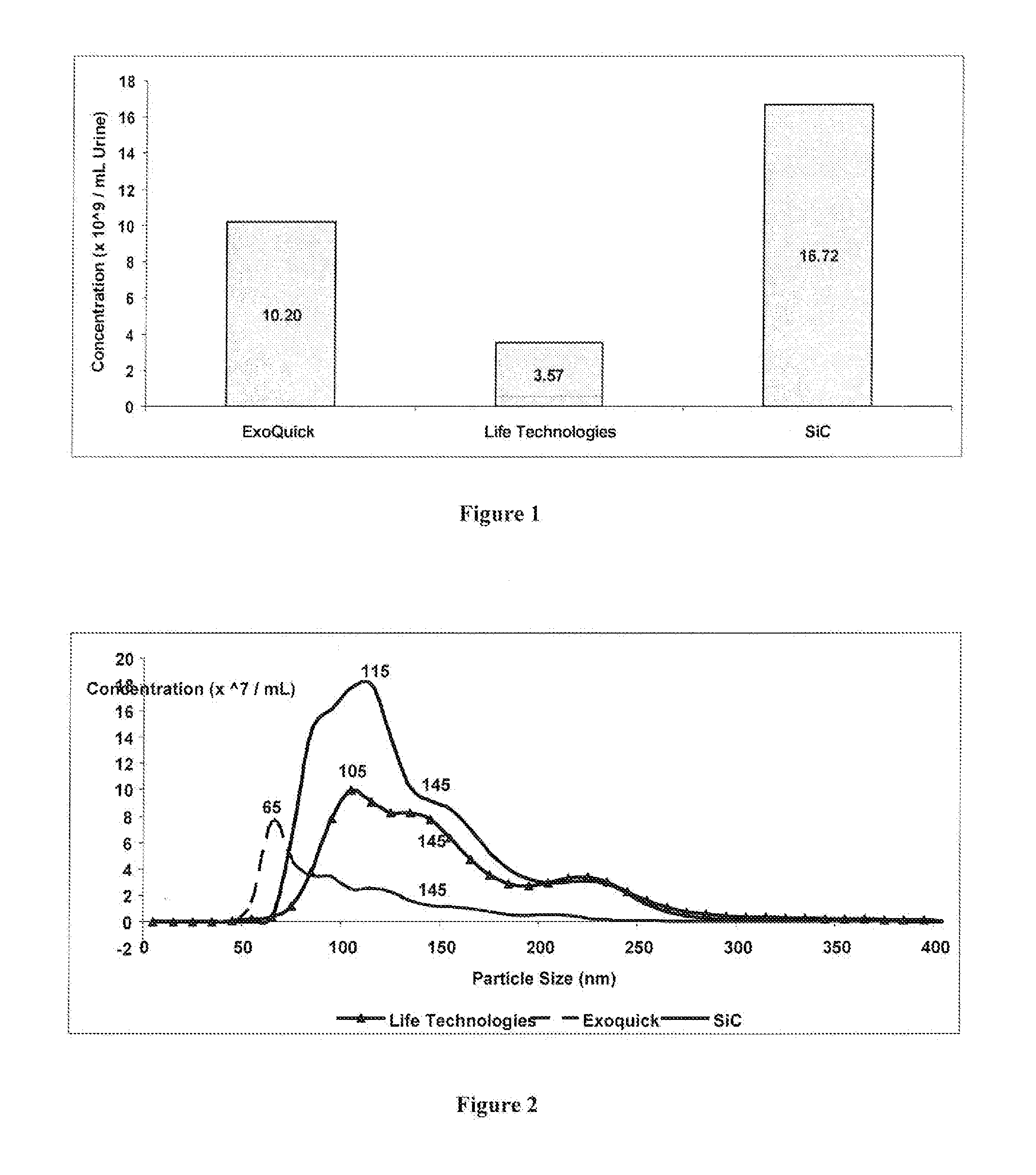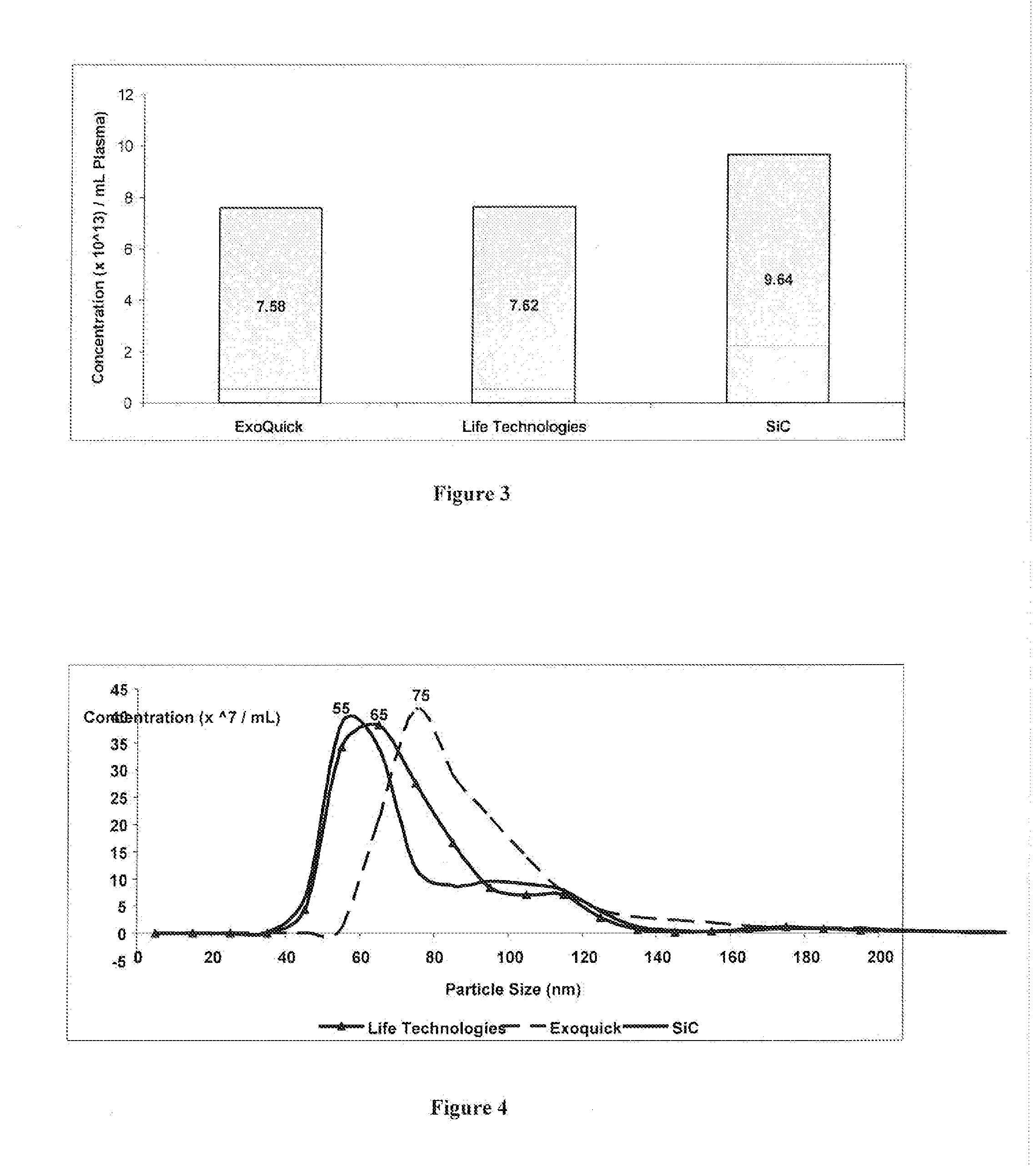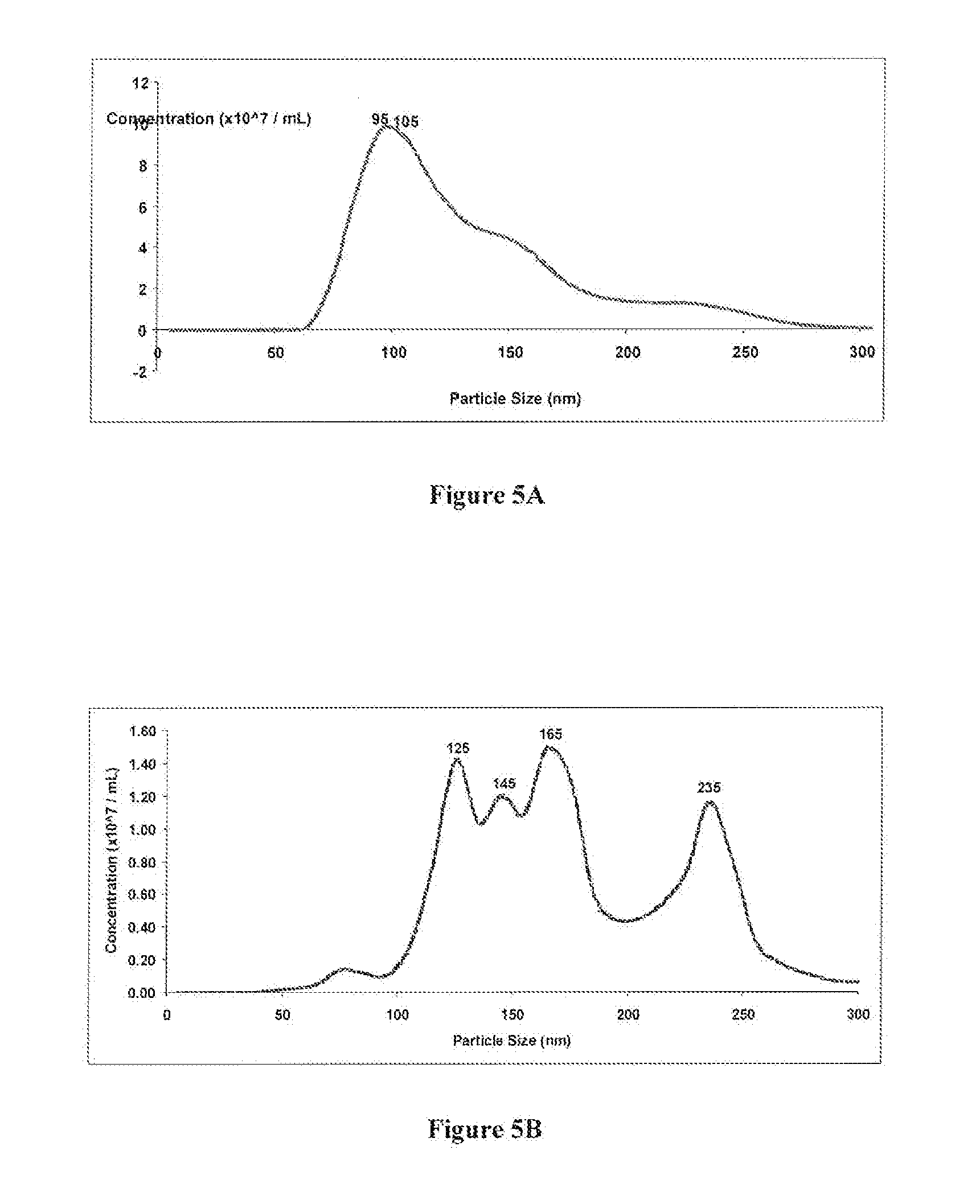Methods for extracellular vesicle isolation and selective removal
a technology of extracellular vesicles and selective removal, which is applied in the field of isolation of extracellular vesicles, can solve the problems of time-consuming and laborious methods, requiring the use of expensive and specialized ultracentrifuges, and using ultracentrifuges
- Summary
- Abstract
- Description
- Claims
- Application Information
AI Technical Summary
Benefits of technology
Problems solved by technology
Method used
Image
Examples
example 1
Comparing the Efficiency of SiC versus Commercially Available Kits in Isolating Extracellular Vesicles, including Exosomes, from Urine
[0063]SiC in a slurry format was tested for its ability to isolate exosomes from 5 mL of urine, and the performance of the SiC was compared to two different commercially available exosome precipitation reagents. The SiC slurry was prepared by adding 6.25 grams of SiC (G / S 2500) to 10 mL of 1× PBS (pH 7). Fifteen mL of urine was collected into a conical tube and centrifuged at 200× g (˜1,000 RPM) for 10 minutes to remove urine exfoliated cells and debris. The cell-free urine was decanted into a new tube and centrifuged at 1,800× g (˜3,000 RPM) for 10 minutes to remove any residual debris or bacterial cells. Five mL of the cell-free urine was transferred to a new tube and 400 μL of the SiC slurry was added to the urine samples. The pH was then adjusted to pH 8.5 using 1 M Tris Base (pH 11) to allow for the exosomes to bind to the SiC resin. The sample w...
example 2
Comparing the Efficiency of SiC versus Commercially Available Kits in Isolating Extracellular Vesicles, including Exosomes, from Plasma
[0066]SiC in a slurry format was tested for its ability to isolate extracellular vesicles, including exosomes, from 1 mL of plasma, and the performance of the SiC was compared to two different commercially available exosome precipitation reagents. The SiC slurry was prepared by adding 6.25 grams of SiC (G / S 2500) to 10 mL of 1× PBS (pH 7). Blood was collected on EDTA or citrate using a standard blood collection tube. The collection tube was centrifuged at 2000 RPM for 15 minutes. The upper plasma fraction was collected and transferred to a fresh tube and centrifuged at 2000 RPM for 10 minutes. The clear supernatant containing the purified plasma was collected. One mL of the prepared plasma was transferred to a tube and 200 μL of the SiC slurry was added to the plasma samples. The pH was then adjusted to pH 8.5 using 1M Tris Base (pH 11) to allow for ...
example 3
Comparing the Efficiency of SiC versus Ultracentrifugation in Isolating Extracellular Vesicles, including Exosomes, from Urine
[0069]SiC in a slurry format was tested for its ability to isolate exosomes from 10 mL of urine, and the performance of the SiC was compared to the traditional method of ultracentrifugation. The SiC slurry was prepared by adding 6.25 grams of SiC (G / S 2500) to 10 mL of 1× PBS (pH 7). Ten mL of urine was collected into a conical tube and centrifuged at 200× g (˜1,000 RPM) for 10 minutes to remove urine exfoliated cells and debris. The cell-free urine was decanted into a new tube and centrifuged at 1,800× g (˜3,000 RPM) for 10 minutes to remove any residual debris or bacterial cells. The remaining cell-free urine sample was transferred to a new tube and 400 μL of the SiC slurry was added to the urine samples. The pH was then adjusted to pH 8.5 using 1M Tris Base (pH 11) to allow for the exosomes to bind to the SiC resin. The sample was mixed by vortexing for 10...
PUM
| Property | Measurement | Unit |
|---|---|---|
| Diameter | aaaaa | aaaaa |
| Diameter | aaaaa | aaaaa |
Abstract
Description
Claims
Application Information
 Login to View More
Login to View More - R&D
- Intellectual Property
- Life Sciences
- Materials
- Tech Scout
- Unparalleled Data Quality
- Higher Quality Content
- 60% Fewer Hallucinations
Browse by: Latest US Patents, China's latest patents, Technical Efficacy Thesaurus, Application Domain, Technology Topic, Popular Technical Reports.
© 2025 PatSnap. All rights reserved.Legal|Privacy policy|Modern Slavery Act Transparency Statement|Sitemap|About US| Contact US: help@patsnap.com



